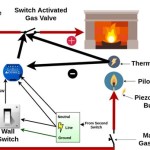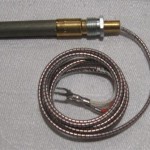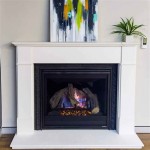Understanding Thermal Couplers in Gas Fireplaces
A gas fireplace offers a convenient and aesthetically pleasing alternative to traditional wood-burning fireplaces. Their ease of use and relatively clean operation make them a popular choice for many homeowners. However, the consistent and safe operation of a gas fireplace relies on several key components, one of the most crucial being the thermal coupler, also known as a thermocouple.
The thermal coupler functions as a safety device, constantly monitoring the pilot light flame. Its primary purpose is to ensure that gas continues to flow to the main burner only when the pilot flame is present. This prevents unburned gas from accumulating and potentially causing an explosion. Understanding how a thermal coupler works, its importance, and the symptoms of a failing thermal coupler is vital for maintaining a safe and efficient gas fireplace.
The operation of a gas fireplace, in general, involves a sequence of events. First, the pilot light is ignited. This small, continuous flame heats the thermal coupler. As the thermal coupler heats up, it generates a small electrical current. This current is then sent to the gas valve, which allows gas to flow to the main burner. Once the main burner is lit, the fireplace provides heat. If the pilot light goes out for any reason, the thermal coupler cools down, the electrical current stops, and the gas valve closes, shutting off the gas supply.
The Science Behind Thermal Coupler Operation
The thermal coupler operates on the principle of the Seebeck effect, a thermoelectric phenomenon. This effect demonstrates that a temperature difference between two dissimilar electrical conductors or semiconductors produces a voltage difference between them. In the context of a thermal coupler, two different metal wires are joined at one end, which is exposed to the heat of the pilot flame. This junction is often made of materials like iron and constantan or chromel and alumel.
When the pilot light flame heats the “hot junction” of the thermal coupler, a temperature difference arises between this junction and the “cold junction,” which is connected to the gas valve. This temperature gradient generates a small DC voltage, typically in the millivolt range (around 20-30 mV). This voltage, though small, is sufficient to energize the electromagnet within the gas valve, holding it open and allowing gas to flow to the main burner.
The precise voltage output of a thermal coupler can vary depending on several factors, including the materials used, the temperature of the hot junction, and the ambient temperature of the cold junction. However, the system is designed to operate within a specific voltage threshold. If the voltage drops below this threshold, even slightly, the gas valve will close, shutting off the gas supply as a safety precaution.
It's crucial to remember that the thermal coupler doesn't create a continuous flow of electricity. It only generates electricity as long as the pilot flame is heating the hot junction. If the pilot flame is extinguished, the temperature difference disappears, the voltage drops to zero, and the gas valve immediately closes. This rapid response is essential for preventing gas leaks and ensuring safety.
Importance of a Functioning Thermal Coupler
The thermal coupler's role extends far beyond simply keeping the gas flowing to the main burner. It is the primary safety mechanism that prevents the accumulation of unburned gas within the fireplace or surrounding area. A malfunctioning thermal coupler can have serious consequences, potentially leading to dangerous situations.
Without a functioning thermal coupler, if the pilot light were to extinguish due to a draft, a gas surge, or any other reason, the gas valve would remain open. This would allow unburned gas to escape into the room. Natural gas or propane is odorless on its own, so gas companies add an odorant (mercaptan) to make it detectable. However, in certain situations, the concentration of gas might not be high enough to be immediately apparent, or individuals with a reduced sense of smell might not detect the leak.
The accumulation of unburned gas presents a significant explosion hazard. Any spark, whether from a static electricity discharge, a faulty electrical appliance, or even someone lighting a cigarette, could ignite the gas, causing a potentially devastating explosion. Furthermore, even without an explosion, prolonged exposure to unburned gas can lead to carbon monoxide poisoning, a silent and potentially fatal threat.
Therefore, maintaining a properly functioning thermal coupler is paramount for ensuring the safety of a gas fireplace. Regular inspection and prompt replacement of a faulty thermal coupler are essential preventative measures that can significantly reduce the risk of gas leaks, explosions, and carbon monoxide poisoning.
Beyond safety, a properly functioning thermal coupler also contributes to the efficient operation of the gas fireplace. A failing thermal coupler may cause intermittent pilot light outages, leading to frequent relighting attempts, which can be frustrating and wasteful. Replacing a failing thermal coupler restores consistent operation and prevents unnecessary gas consumption due to repeated relighting.
Identifying a Faulty Thermal Coupler
Recognizing the signs of a failing thermal coupler is crucial for prompt replacement and preventing potentially dangerous situations. There are several common symptoms that indicate a problem with the thermal coupler.
One of the most common symptoms is the pilot light going out shortly after the control knob is released. When lighting a gas fireplace, the control knob typically needs to be held down for a short period to allow the thermal coupler to heat up and generate enough voltage to keep the gas valve open. If the pilot light immediately goes out as soon as the knob is released, it suggests that the thermal coupler is not producing sufficient voltage to keep the gas valve energized.
Another indication of a failing thermal coupler is difficulty in lighting the pilot light initially. If it takes multiple attempts to light the pilot light, or if the pilot light flame is weak or unstable, it could indicate that the thermal coupler is not functioning correctly. A weak or unstable flame might be due to insufficient gas flow, which can be caused by a faulty thermal coupler not fully opening the gas valve.
Intermittent pilot light outages are another common symptom. If the pilot light randomly goes out even after it has been lit successfully, it could be a sign of a thermal coupler nearing the end of its lifespan. The thermal coupler might be producing enough voltage initially, but as it heats up or cools down, the voltage might fluctuate, causing the gas valve to close intermittently.
Visual inspection of the thermal coupler can sometimes reveal signs of damage. Look for corrosion, cracks, or kinks on the thermal coupler wire. Any visible damage suggests that the thermal coupler is compromised and needs to be replaced. It's also important to ensure that the thermal coupler is properly positioned within the pilot light flame. The tip of the thermal coupler should be directly in the path of the flame to ensure adequate heating.
If any of these symptoms are observed, it is recommended to test the thermal coupler with a multimeter to verify its voltage output. This will provide a definitive diagnosis and confirm whether the thermal coupler needs to be replaced. Professional assistance from a qualified gas fireplace technician is always recommended for diagnosing and repairing gas fireplace components.
Replacing a thermal coupler is a relatively straightforward process, but it should be performed with caution and attention to safety. Always shut off the gas supply to the fireplace before attempting any repairs. Follow the manufacturer's instructions carefully when replacing the thermal coupler. Ensure that the new thermal coupler is compatible with the gas fireplace model and that it is properly installed. After replacing the thermal coupler, test the fireplace thoroughly to ensure that it is functioning correctly and that there are no gas leaks.

Gas Fireplace Won T Stay Lit Magic Touch Mechanical

Thermo Thermopiles Friendly Fires

Thermo Thermopiles Friendly Fires

Identifying Gas Fireplace Parts Www Mygasfireplacerepair Com

Gas Fireplace Won T Stay Lit Magic Touch Mechanical

Gas Fireplace Missing Thermopile

Pse Pilot Assembly With Eco Thermocouple Natural Gas Fire Parts Com

Gas Fireplace Pilot Lights Your Complete Guide Universe

Universal Thermocouple Thermal Coupling For Gas Fireplace Furnace Heater New

Lyumo Gas Stove Universal Thermocouple Fireplace Replacement Kit Adaptors Com
Related Posts








